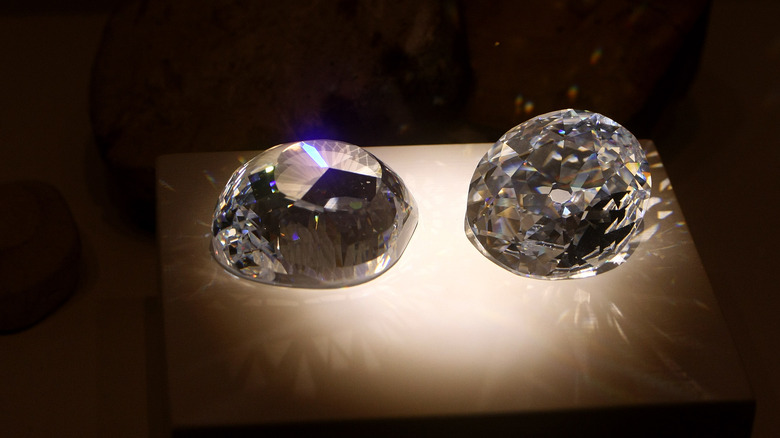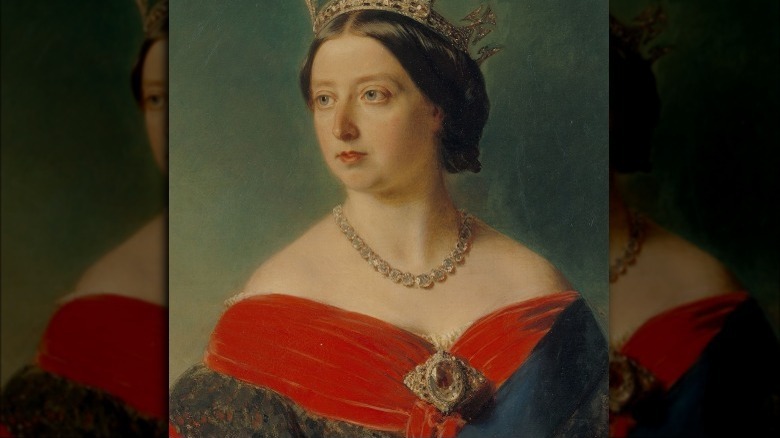What Is The Curse Of The Kohinoor Diamond?
The Kohinoor Diamond (seen in replica, above) was found thousands of years ago in India, so precious that every powerful ruler would proudly display it on their crowns, jewelry, or thrones as a symbol of their wealth and power (via The Taj Tours). The first recorded mention of the diamond (sometimes called the Koh-i-Noor) dates back all the way to 1306, but by then it had belonged to the ruling dynasties for centuries. The diamond traded hands with the different rulers of India until an invading Persian shah captured it and named it the "Koh-i-noor," or "Mountain of Light."
However, for as long as the diamond has been mentioned in the historical record, so has the supposed curse surrounding it. It was said that whoever owned the diamond owned the world, but also came to know its misfortunes. Those who came into possession of the diamond soon lost their empires to war or met violent ends. The Mughal Emperor Shah Jahan, who built the Taj Mahal, put the Koh-i-Noor into his throne, and was promptly imprisoned by his son, the start of a violent family power conflict. The Persian shah who gave it its modern name was also assassinated not long after recovering the precious stone.
The diamond was taken for the British crown
According to Smithsonian Magazine, the diamond reached the hands of British royalty in the mid-1800s, when it became part of a brooch for Queen Victoria (above). India was the only known source of diamonds until the 1700s, which made the sub-continent a target for nearby emperors. When Mughal emperor Shah Janan built his throne to encase the Koh-i-noor, his seat ended up costing four times as much as the entire Taj Mahal. The diamond was at a center of many bloody transitions of power in South and Central Asia, before being recovered by Sikh ruler Rajat Singh. Singh particularly prized the diamond, elevating it to a symbol of India itself.
The British Crown sought out the diamond, as capturing the Koh-i-Noor while conquering India would be a symbol of their complete colonial power. Singh died and left the diamond to a sect of Hindu priests; a bloody explosion of murders and intrigue followed until a 10-year-old boy and his mother where the only heirs to the throne. The British imprisoned the mother and forced the boy to sign away his rights to the diamond and to all of India. When Queen Victoria finally got her hands on it, the British public was dismayed at how simple it was. The diamond, which weighs 105 carats (per the BBC), now sits as part of the Crown Jewels, steadily gaining controversy as people around the world question the "loot" taken by the British empire. The curse, in some ways, still lives on.

